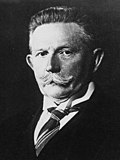| |||||||||||||||||||||||||||||||||||||||||||||||||||||||||||||||||||||||||||||||||||||
All 648 seats in the Reichstag 324 seats needed for a majority | |||||||||||||||||||||||||||||||||||||||||||||||||||||||||||||||||||||||||||||||||||||
|---|---|---|---|---|---|---|---|---|---|---|---|---|---|---|---|---|---|---|---|---|---|---|---|---|---|---|---|---|---|---|---|---|---|---|---|---|---|---|---|---|---|---|---|---|---|---|---|---|---|---|---|---|---|---|---|---|---|---|---|---|---|---|---|---|---|---|---|---|---|---|---|---|---|---|---|---|---|---|---|---|---|---|---|---|---|
| Registered | 44,685,764 ( | ||||||||||||||||||||||||||||||||||||||||||||||||||||||||||||||||||||||||||||||||||||
| Turnout | 88.7% ( | ||||||||||||||||||||||||||||||||||||||||||||||||||||||||||||||||||||||||||||||||||||
| |||||||||||||||||||||||||||||||||||||||||||||||||||||||||||||||||||||||||||||||||||||
| |||||||||||||||||||||||||||||||||||||||||||||||||||||||||||||||||||||||||||||||||||||
| This article is part of a series on the |
| Politics of Germany |
|---|
 |
Federal elections were held in Germany on 5 March 1933, after the Nazi seizure of power on 30 January and just six days after the Reichstag fire. The election saw Nazi stormtroopers unleash a widespread campaign of violence against the Communist Party (KPD), left-wingers,[1]: 317 trade unionists, the Social Democratic Party[1] and the Centre Party.[1]: 322 They were the last multi-party elections in a united Germany until 1990.
The 1933 election followed the previous year's two elections (July and November) and Hitler's appointment as Chancellor. In the months before the 1933 election, SA and SS displayed "terror, repression and propaganda ... across the land",[1]: 339 and Nazi organizations "monitored" the vote process. In Prussia 50,000 members of the SS, SA and Der Stahlhelm were ordered to monitor the votes by acting Interior Minister Hermann Göring, as auxiliary police.[citation needed]
The Nazi Party (NSDAP) failed to win an absolute majority in this last – more or less – free election. It did, however, register a large increase in votes and gained a Reichstag majority together with its coalition partner, the German National People's Party (DNVP). This was the first time since 1930 that a governing coalition had held a parliamentary majority; however, despite waging a campaign of terror against their opponents, the Nazis only tallied 43.9 percent of the vote on their own, well short of a majority to govern alone.
This would be the last contested election held in Germany until after World War II. Despite now holding a bare working majority in the Reichstag, Hitler wanted more. Two weeks after the election, he was able to pass an Enabling Act on 23 March with the support of the Nazi Party, the DNVP and the Centre parties, which effectively gave Hitler dictatorial powers. Within months, the Nazis banned all other parties and turned the Reichstag into a rubberstamp legislature comprising only Nazis and pro-Nazi "guests".
- ^ a b c d Evans, Richard J. (2004). The Coming of the Third Reich. New York: Penguin Press. ISBN 1-59420-004-1.








